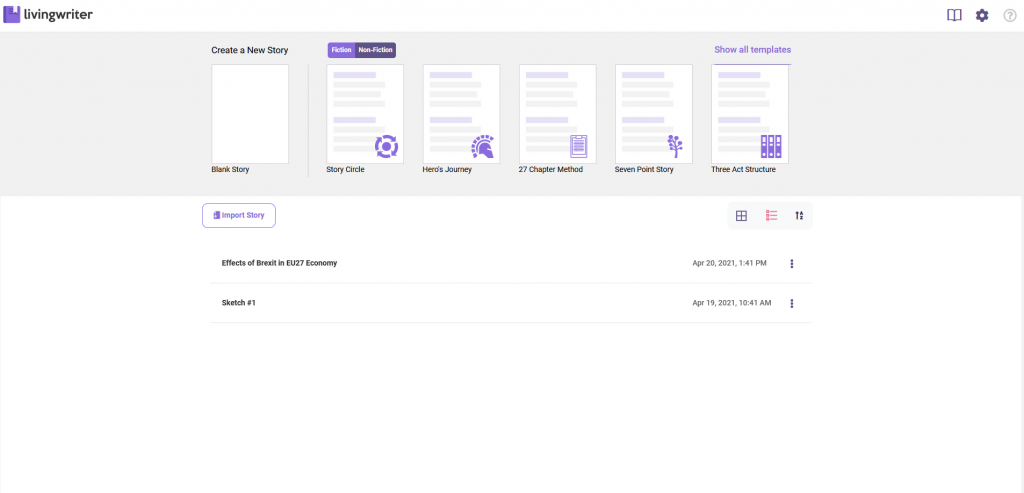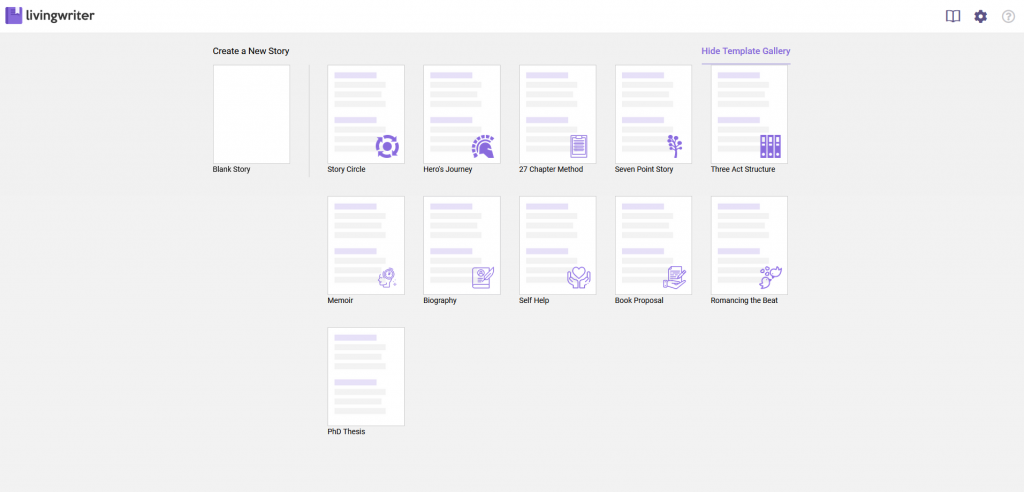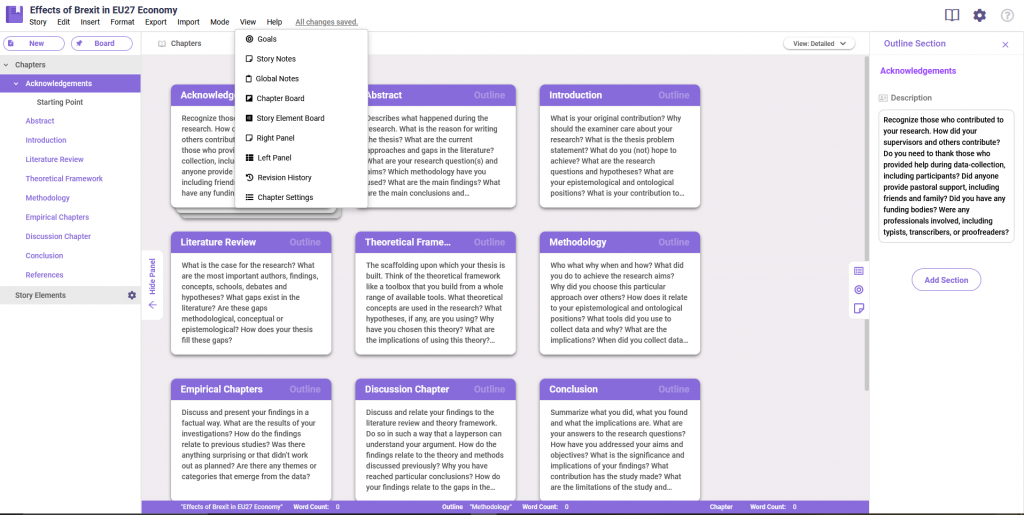Writing a PhD with LivingWriter

For any student, be it young or old, writing a PhD thesis always feels like doing a monumental work, and it kind of is. It involves countless hours of research, thinking and raw effort yet the result is also very rewarding. It represents the culmination of possibly years of study and the start of a new stage in life.
That being said, there are great tools to help out the soon-to-be professionals with this stressful endeavor. Among these tools is LivingWriter and its wonderful Ph.D. Template!
How does It work?
The template design, as well as all the other LivingWriter´s features, are extremely useful for writing your thesis project. But before we go deep into the nooks and crannies of them both, let’s see how to apply the template, shall we?
1. First off, you will need to log in to LivingWriter, which will lead you to this page.

2. Secondly, you´ll want to click on the “Show All Templates” button on the upper right side of the page.

3. And lastly, you simply have to click on the “PhD Thesis” template that is right at the button of the list and voila! You are ready to get started with your thesis project.
How is it structured?
Now then, this template covers what could be called the 10 core elements that are fundamental when writing a PhD project, with these being:
- 1. Acknowledgements: this is a common courtesy given by the thesis authors to every person and organization that helped them achieve their proposed goals. It normally includes thank you´s for the authors parents, tutor, professors, colleagues, among others.
2. Abstract: here is where you start focusing on the project itself. Normally this section includes the reasoning behind why you chose this particular topic, what intrigued you about it and what exactly you are trying to prove or find out about.
3. Introduction: this is the pitch deck of your work, where you will explain the value of what you are trying to research and why it should interest others. It also includes the thesis problem statement as well as further delimitation of what exactly you are trying to achieve.
4. Literature review: every good thesis project has a solid foundation in its literature, which is practically the backbone of the whole project. Here you discuss the importance of the authors, debates, works, and other literature materials you used to further your research. You can also showcase your own mastery of the subject as you point out which was more useful to you and why.
5. Theoretical Framework: if the literature and bibliography of the project is the backbone, this is the body. Here you build upon every single tool and concept you are using in your research, including their origins and purposes. You also manage all the hypotheses that you are applying without forgetting of including their reasoning. This part is especially sensitive when it comes to thesis about scientific disciplines that involve lots of calculus and formulas, such as Physics and Chemistry.
6. Methodology: your research and investigation must have followed a specific logic and approach, which is what you explain here. This commonly includes how you collected data if you did, and why, as well as the results and conclusions based on them.
7. Empirical Chapters: in this section the thesis basically becomes a book. You organize your findings and experiences in cohesive chapters and elaborate on them.
8. Discussion Chapter: here you discuss your findings in relation to the literature you used and your proposed theoretical framework. It also includes your explanation of the correlation between all 3 while keeping the language technical albeit understandable to less knowledgeable readers. Despite being an academic work, a thesis can also be perused by people without technical knowledge.
9. Conclusion: arguably the best part, here you point out all the findings and results of your investigation. It also contains your reasoning on how they relate to your own aims and objectives that were explained beforehand. It could also include any new questions that could arise from said results.
10. References: this is a formal requirement for any academic work which consists of a list of all the references cited all throughout the text, basically, the bibliography. Beware though, not complying with your university´s or institution´s house style may cause a rejection of the thesis.
With all these sections already laid out orderly and neatly like they are in LivingWriter´s Ph.D. template, you will be on your way to graduation before you know it!
And There’s More
Yes, you read that right, it gets even better. The Ph.D. template already offers you a very neat layout for your thesis, but there is much more to LivingWriter. We offer a wide variety of features that can facilitate your writing process and improve your results.
Among these features you´ll find Outlines, the Board, Story Elements, and your very own writing Goals!

Writing has never been easier, and you won’t even need to worry about grammatical errors. Grammarly, the best spelling and grammar checking tool, is integrated with LivingWriter.
If you are itching to give LivingWriter a try then get started for free today!